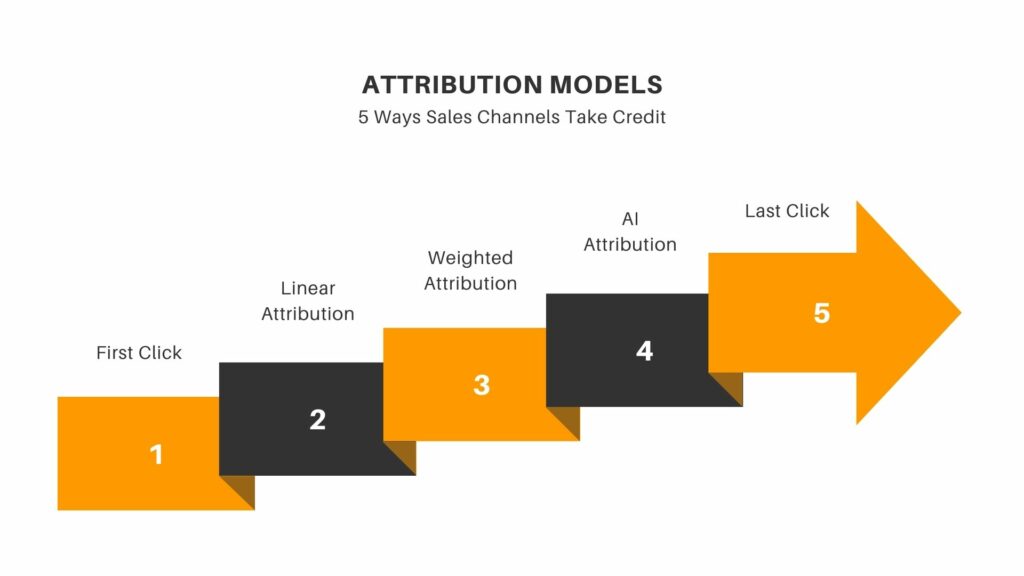In the digital marketing realm, understanding how your customers journey from awareness to conversion is crucial. It allows businesses to optimize their strategies and allocate resources more efficiently. To help decipher this journey, marketers turn to attribution models. Let’s dive into the five pivotal models you should be familiar with:

1. First Click Attribution
Definition: This model gives 100% credit to the first touchpoint a customer has with your brand.
Tracking Method: One of the best ways to track this model is through post-purchase surveys. By directly asking customers about their initial interactions, you get first-hand insights.
Tool Recommendation: Fairing is an excellent tool for this purpose, offering a streamlined way to gather this data.
Why it’s important: First-click attribution is vital as it helps marketers understand the top of the sales funnel and identify the platforms or campaigns driving brand awareness.
2. Linear Attribution
Definition: In this model, every interaction or touchpoint with the customer gets equal attribution value.
Why it’s favored: Linear attribution offers a more comprehensive view of the customer journey. It acknowledges the fact that each touchpoint plays a role in guiding the customer towards a purchase. For many, including myself, it’s a favorite because it provides clarity on what tools and channels consistently engage customers throughout their journey.
3. Weighted (or Time Decay) Attribution
Definition: Weighted attribution distributes the credit based on the significance of the touchpoint. The closer a touchpoint is to the conversion, the more credit it usually receives.
Consideration: On average, a customer might require nine impressions before making a purchase. This model considers that some touchpoints might be more influential in the decision-making process than others.
Why it’s important: Weighted attribution recognizes the cumulative effect of multiple touchpoints, emphasizing those that might have a more substantial push toward conversion.
4. AI Attribution
Definition: AI (Artificial Intelligence) attribution utilizes algorithms to assess and allocate credit to different touchpoints.
Platform Usage: Major platforms like Facebook and Google Ads employ this model.
Caveat: While AI attribution can be incredibly accurate, it’s essential to understand its limitations. With the onset of privacy laws, the credibility of AI-driven insights has faced challenges. They don’t necessarily have the same level of trustworthiness as historical data that existed before these laws.
5. Last Click Attribution
Definition: This model gives all the credit to the last touchpoint before the conversion.
Strength: Last click is often seen as one of the most accurate models, primarily because it’s linked closely with the purchase decision, often occurring minutes before a customer’s purchase.
Why it’s important: It helps marketers understand which platforms or campaigns are effective at sealing the deal.
In Conclusion:
Attribution models serve as a marketer’s compass, guiding strategy adjustments and resource allocations. While my personal preference leans towards the linear model for its holistic view and the first click for its insights into funnel initiation, the best model often varies depending on business goals and customer behavior. It’s essential to explore and understand each model’s strengths and weaknesses to make an informed decision.
